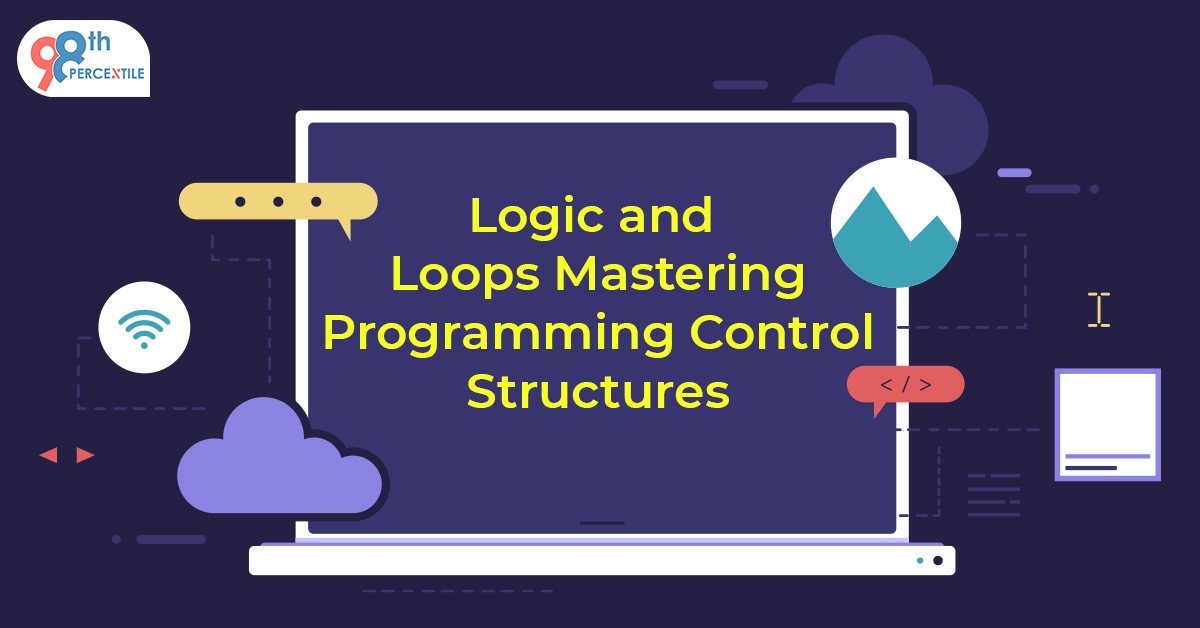Loops are a fundamental programming concept that allows students to achieve coding efficiency by automating repetitive tasks and executing instructions multiple times. Understanding and effectively using loops is crucial for students learning to code, as it helps streamline their programs and solve problems more efficiently.

In simpler words -
Loops are an essential and fundamental concept in programming, allowing developers to perform repetitive tasks with ease and efficiency. Whether you're a beginner learning the basics of coding or an experienced programmer looking to refine your skills, mastering loops is crucial.
Here's how students can harness the power of loops to optimize their coding efforts -
1. Streamline Repetitive Tasks:
One of the primary benefits of loops is their ability to streamline repetitive tasks. Instead of writing the same lines of code repeatedly, students can use loops to automate these processes. For example, when dealing with a list of data, a "for" loop can iterate through each element, performing the same set of instructions without manual duplication.
2. Improved Code Readability:
Using loops can lead to more readable and organized code. For instance, a "while" loop can be employed to continue executing a block of code until a specific condition is met. This simplifies the logic and structure of the program, making it easier for both the coder and others who may review the code.
3. Dynamic Data Handling:
Loops provide students with the ability to work with dynamic data efficiently. Whether it's processing user input, analyzing large datasets, or performing repetitive calculations, loops allow for dynamic data handling, and adapting to varying inputs and conditions.
4. Time Efficiency:
Loops contribute significantly to coding efficiency by reducing the time and effort required to accomplish a task. Students can use loops to perform actions repeatedly, eliminating the need to write separate code for each instance. This not only saves time but also reduces the chances of errors that can occur when copying and pasting code manually.
5. Problem-Solving and Algorithmic Thinking:
Understanding how to use loops effectively encourages students to think algorithmically. They learn how to break down complex problems into smaller, manageable steps and then use loops to iterate through these steps. This problem-solving skill is valuable not only in coding but also in various areas of computer science and beyond.
6. Versatility in Coding Languages:
The knowledge of loops is transferable across programming languages. Whether students are learning Python, Java, C++, or any other language, the concept of loops remains consistent. This means that once students grasp loops, they can apply the knowledge to various coding projects and adapt to new languages more easily.
7. Debugging and Maintenance:
Loops can aid in debugging and code maintenance. When issues arise in a loop, students can identify and rectify errors within a single block of code, rather than searching for and modifying multiple occurrences of similar code throughout a program. This makes troubleshooting and code maintenance more efficient.
Let’s explore the best strategies for learning loops effectively :
1. Understand the Basics:
Before diving into loops, it's essential to have a solid grasp of basic programming concepts and syntax. Ensure you are familiar with variables, data types, and conditional statements. A solid foundation in these areas will make it easier to comprehend loops and their application.
2. Choose the Right Language:
Different programming languages have various types of loops, such as "for," "while," and "do-while" loops. Start with a language that suits your learning style and goals. Python, for instance, is known for its simplicity and readability, making it an excellent choice for beginners. C, Java, and JavaScript are also popular options.
3. Start with Simple Examples:
Begin with straightforward loop examples that involve printing numbers, counting, or iterating through basic lists. Building a strong foundation through simple exercises will help you understand the core concepts of loops.
4. Learn Loop Structures:
Each type of loop has its unique structure. Familiarize yourself with how "for," "while," and "do-while" loops are written in your chosen programming language. Pay attention to the loop initialization, condition, and update statements.
5. Experiment and Practice:
Programming is a hands-on skill, and the best way to learn loops is through practice. Create your own loop-driven programs and experiment with different scenarios. Start with small tasks, such as printing a series of numbers, and gradually work your way up to more complex challenges.
6. Study Code Examples:
Examine code examples that utilize loops. Read through existing programs and analyze how loops are used to solve problems. Many programming tutorials and textbooks provide sample code that you can learn from.
7. Online Coding Challenges:
Participate in online coding challenges and exercises on platforms like LeetCode, HackerRank, or Codecademy. These platforms offer a variety of problems that require the application of loops. Solving these challenges will help you gain practical experience.
8. Interactive Learning Tools:
Consider using interactive learning tools and environments designed for teaching programming. Websites like Codecademy and Khan Academy offer interactive coding courses that cover loops and other essential programming concepts.
9. Build Real-World Projects:
Apply loops to real-world projects. Whether it's creating a simple game, automating tasks, or processing data, practical application reinforces your loop-learning journey.
10. Learn from Mistakes:
Expect to make mistakes and learn from them. Programming is about problem-solving, and encountering errors is a natural part of the process. Overcoming challenges will deepen your understanding of loops.
In conclusion, mastering loops is a fundamental step in becoming a proficient programmer. It requires a combination of theoretical knowledge and practical experience. By starting with simple examples, practicing regularly, seeking guidance when needed, and gradually tackling more complex problems, you can become proficient in using loops to solve a wide range of programming challenges. Remember that patience and persistence are key when learning this essential programming concept.

 Students/Staff
Students/Staff Parents
Parents ElevatEd
ElevatEd













